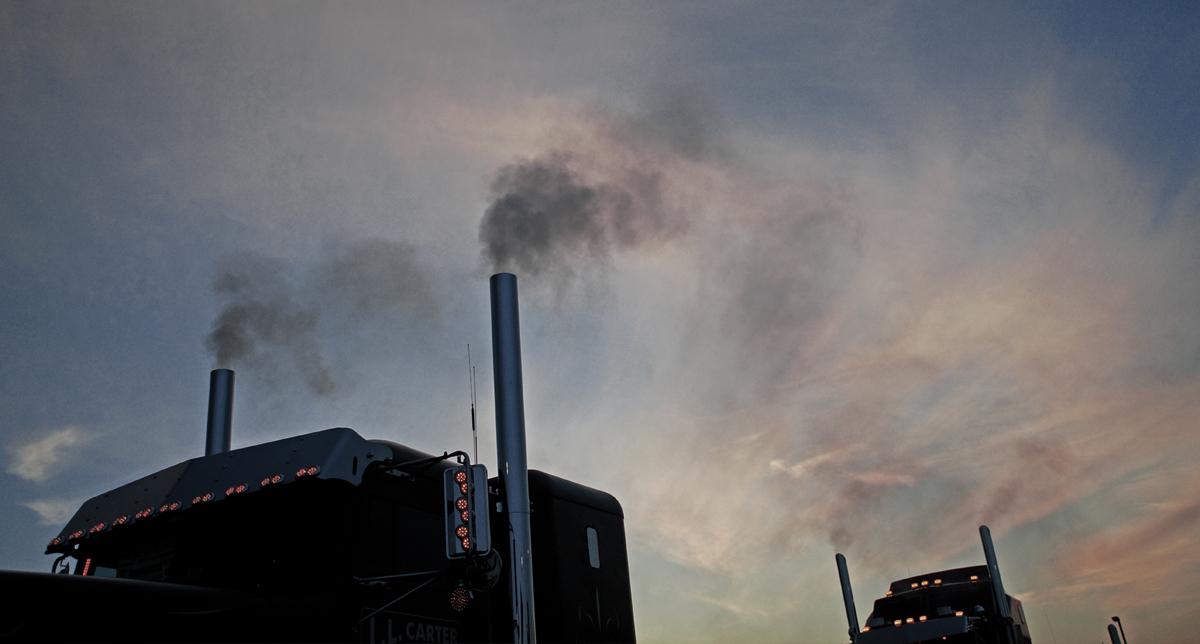5 Min Read • March 19, 2024
How to Explain the EPA’s 2027 Emissions Regulation to Your Customers

Heavy-Duty Engine and Vehicle Standards, more commonly known as EPA 2027, is the most recent ruling on vehicle emissions from the Environmental Protection Agency (EPA). The final rule was published in December 2022 but doesn’t take effect until model year 2027 vehicles.
As simply put as possible, the rule calls for nitrogen oxides (NOx) to be cut to 0.035 grams per horsepower-hour during normal vehicle operation, 0.05 grams at low load and 10 grams at idle. What this translates to is an 82.5% reduction in NOx emissions from today’s standard of 2 milligrams.
In addition, the rule defined the useful life of a vehicle as 650,000 miles, up from the previous 435,000. This means manufacturers will have to provide emission system warranties to 650,000 miles to ensure that vehicles remain in compliance.
These facts and figures will have very concrete impacts on truck makers and truck dealers in the next few years, and we break them down below so dealers better understand what their customers and manufacturers are facing.
Changes to Trucks Are Imminent
In order to meet these requirements, trucks may need to be equipped with technologies such as cylinder deactivation or dual-dose selective catalytic reduction.
Cylinder deactivation works by shutting down certain cylinders in the engine, which helps maintain higher temperatures in the after-treatment system to improve NOx conversion efficiency and leads to cleaner exhaust. Cylinder deactivation has been common on V6- and V8-powered pickup trucks, but it hasn’t been used in the trucking industry. The dual-dosing SCR option could provide a reduction in emissions both on the way into the SCR and again on the way out.
While truck makers are working on solutions for meeting the new requirements, doing so isn’t without challenges as some reengineering may be needed. Truck makers have a long history of meeting emissions regulations, of course, but the transition hasn’t always been smooth — or inexpensive.
The trucking industry believes the rules are going to make new vehicles more costly as well as add complexity. Just how big the increase will be depends on who you ask. Trucking industry experts peg the number in the $20,000 – $25,000 range; the EPA suggests the increase could be much lower.
The new technology is just a part of the price increase; the longer warranty period will have a significant impact on truck makers as the new definition of useful life is significantly longer than the current definition.
That extended warranty may be a bright spot for dealers since fleets typically bring their vehicles back to the dealership for service while they are under warranty.
Fleet Operators Will Need to Adjust Their Buying Cycles
If past behavior is any predictor of future behavior, fleets will likely alter their buying cycles to avoid having to purchase vehicles that come with a significantly higher price tag and questions about their reliability and fuel efficiency.
Some fleets will deviate from their normal buying cycles and accelerate the purchase of new vehicles in the years leading up to model year 2027. During past emissions-related “pre-buy events,” truck manufacturers ramped up production to meet fleet demand. Given that order boards haven’t fully recovered from the pandemic-induced supply chain shortages, it isn’t clear if manufacturers will be able to meet increased demand.
Alternative Fuels May Come Into Play
If cost predictions about the trucks built to meet EPA 2027 regulations turn out to be true, that could bring the cost of some alternative-fueled vehicles closer to parity with diesel. Now might be the time to begin discussing the myriad powertrain options available including battery electric, hydrogen fuel cell, hydrogen internal combustion, compressed natural gas, hybrids, renewable natural gas, and renewable diesel.
It's important to note that at this point, there’s no one alternative powertrain solution that’ll work for every application. You’ll have to work very closely with fleets to understand their duty cycles and use cases. If they’re considering a move to battery electric vehicles (BEVs), encourage them to engage with their local utility early, as getting the necessary infrastructure in place can take time.
Promoting Sustainability Efforts
Fleets that make the move to cleaner transportation should be proactively sharing what they’re doing with customers and prospects. Many shippers are now adding questions about fleets’ sustainability efforts to their request for quote documents. Business can be lost and gained based on how “green” a fleet is. More and more companies, especially consumer-facing brands, are developing sustainability goals and the transportation of their goods is part of that effort.
Work with the customers on their sustainability goals so they can tell a compelling story to their customers and prospects.
More Regulations Are on the Horizon
EPA 2027 isn’t the end of emissions regulations. The EPA also proposed a more stringent standard to reduce greenhouse gas emissions in heavy-duty vehicles beginning with model year 2027. This regulation calls for reduction of greenhouse gas emissions (GHG) from heavy-duty vehicles by an additional 29% by 2032.
The Securities and Exchange Commission (SEC) proposed a rule that would require publicly traded companies to disclose their Scope 1 and 2 emissions with some having to report their Scope 3 emissions too. Trucking operations could fall under Scope 3 depending on if the company operated a private fleet or used common carriers.
Stay informed on current and upcoming emissions regulations so you can assist customers in choosing the right powertrain option at the right time to continue to operate efficiently and profitably.
Share This













































